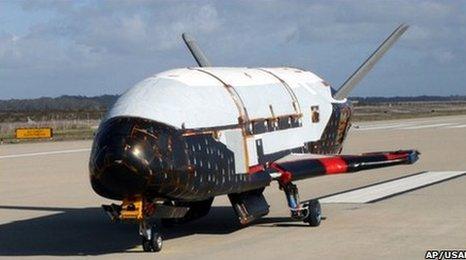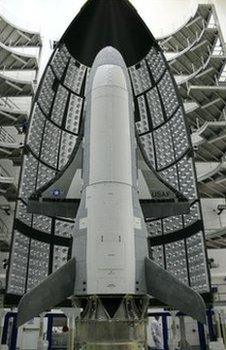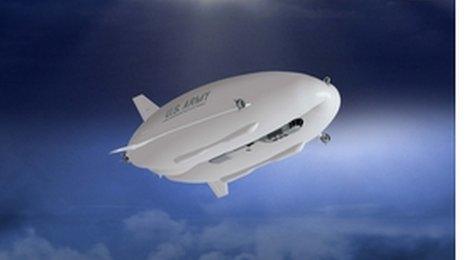Secret US military spaceplane lands in California
- Published

The X-37B bears a superficial resemblance to the space shuttle
A prototype spaceplane developed for the US military is successfully back on Earth after seven months in orbit.
The top secret X-37B unmanned drone landed at Vandenberg Air Force Base 130 miles north of Los Angeles.
It's the first US spacecraft to return to Earth with nobody on board to control the landing.
The vehicle was originally developed by planemaker Boeing as a civilian project before being taken over by the US military.

The precise nature of the X-37B project is classified
The spacecraft was launched on an Atlas 5 rocket from Cape Canaveral in Florida in April, with a maximum mission duration of 270 days.
At 9m (29ft) long and with a 4.5m (15ft) wingspan, it is about one-quarter the size of the space shuttle, with a large engine mounted at the rear of the vehicle for orbit changing.
The full details and cost of the project are secret, but it's thought the first flights will allow officials to test the space craft's performance.
The US Air Force would not say whether the vehicle carried anything in its cargo bay.
Officials have released only a very general description of the mission: monitoring of guidance, navigation, control, thermal protection and autonomous operation in orbit, re-entry and landing.
Program manager Lieutenant Colonel Troy Giese said: "We are very pleased that the program completed all the on-orbit objectives for the first mission."

'Weaponisation' of space
The project's secretive nature has led to accusations that the US is trying to 'weaponise' outer space, something officials in Washington deny.
Other commentators have speculated that the craft could be used as a manoeuvrable spy satellite.
If enemy forces know when satellites are due to fly over their territory, they can limit sensitive activities to times when there are no passes by reconnaissance spacecraft. The X-37B could be deployed on a short timescale and could spring a surprise.
Conventional satellites are also vulnerable to a missile strike because they follow predictable paths in orbit and are relatively easy to spot.
The X-37B craft is expected to return to space some time in 2011.
- Published30 November 2010

- Published20 July 2010

- Published13 July 2010
